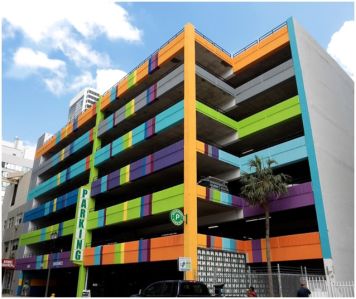Duly Noted: Despite Q4 2011 Drop in Distress, Schechtman, Knakal and Others Rack Up Hundreds of Millions of Dollars in the Deals
By Carl Gaines April 26, 2012 12:35 pm
reprints“By the first quarter of 2010 it was steady,” he said, “and it has increased since January 2010 to the point where we continue to staff around it.”
“We knew the credit crisis was going to be very impactful by the end of ’07—it was very clear,” said Mr. Knakal. “And so the beginning of 2008 we started putting together a list of banks, special servicers and starting to contact them. There really was no business to speak of in 2008 because a lot of these banks and special servicers hadn’t even set up departments to deal with the distressed loans because things, for a good part of 2008, still looked like they might be okay. But then the second half of the year it really was clear that things were not going to move well. So we started to see that activity start tangibly in 2009.” The boom in New York City came in 2010, when, he said, there was probably $6 billion to $7 billion of note sale transactions.
Massey Knakal staffed up too. “We hired a director of special assets and basically were using our existing sales force in conjunction with the special asset department to focus on these opportunities,” Mr. Knakal said. The firm currently has a new director of special assets—Matthew Dillon.
At the end of the process, of course, is a buyer—oftentimes, experts said, looking to gain ownership of the property itself. Jacob Frydman is chairman and CEO of United Realty Partners, part of whose aim is to identify value-add and opportunistic real estate investments. The firm is currently raising $2 billion across several different funds to buy real estate, much of it distressed, along the east coast. And, he said, getting the note is one way to accomplish this.
“We’re raising a private equity fund in Europe for European investors who want to invest in the United States and that fund is called United Realty America Fund,” Mr. Frydman said. “The REIT we have in registration is United Realty Trust Incorporated and we think that we’ll be raising additional funds as well as putting out our own capital to invest in both core assets that are generating current cash flows in areas where we can get higher returns than the trophy markets and then value added opportunities in the trophy markets and in other markets as well. Including, as you’ve suggested, buying notes.”
The notes Mr. Frydman and his colleagues might target, he added, are likely to be secured by properties within two hours of New York City. “It makes it easier to get to in case there’s an issue and it’s the marketplace we know best,” he said.
Previously established relationships with bankers, brokers and capital markets people help them identify opportunities. “We also have close relationships with various law firms that deal with these issues and we try to identify opportunities that are not yet on the market so that we don’t find ourselves necessarily in a bidding war,” he said. “Many of these assets eventually go through some sort of a bidding process. We look for opportunities where we can think of the asset in a different way than it was thought of originally. So when we look at a distressed asset we might see an asset that was designed as a particular use and we might want to change that use. It may have been designed as a condominium and we might find that repositioning it as a rental is better.”
It’s a strategy that doesn’t surprise brokers. “The overwhelming majority of the time,” Mr. Knakal said, “getting into the ownership position is the objective” of the note buyer. He added that the increased demand has led to strong recoveries for clients. “The number of people interested in buying notes continues to increase, so the demand is very significant and that has led to strong recoveries for the clients that are selling notes,” Mr. Knakal added.


